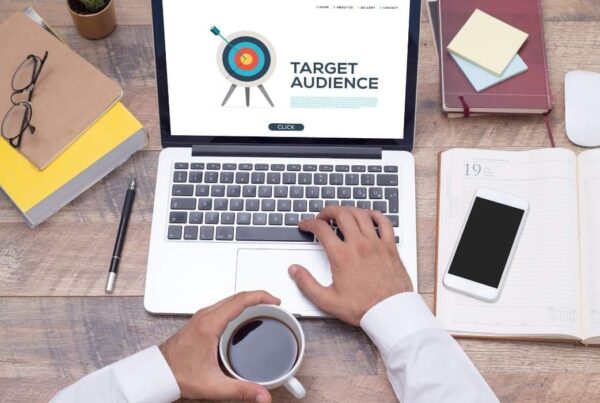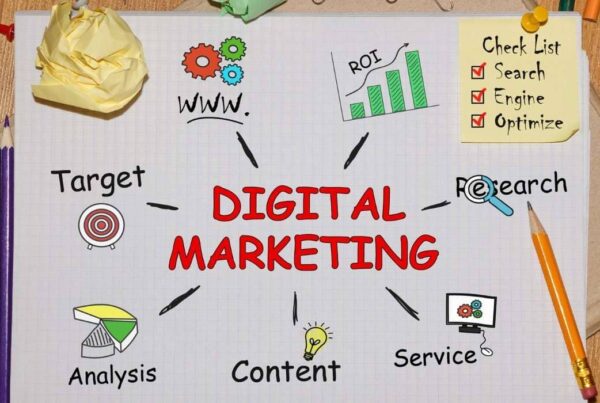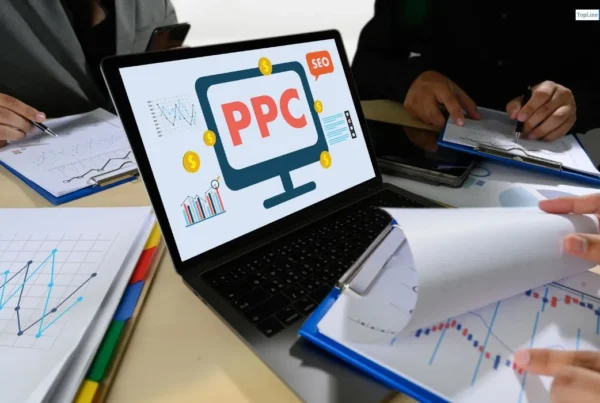B2B Pay-Per-Click (PPC) Advertising: Targeting Businesses Effectively
In the realm of digital marketing, Pay-Per-Click (PPC) advertising stands as a crucial tool for businesses aiming to enhance their online presence and drive targeted traffic.
For B2B companies, PPC advertising can be particularly effective due to its precision targeting capabilities and measurable outcomes.
This article delves into the strategies and best practices for targeting businesses effectively through B2B PPC advertising.
Understanding B2B PPC Advertising
PPC advertising involves placing ads on search engines or social media platforms and paying a fee each time the ad is clicked.
The primary platforms for PPC include Google Ads, LinkedIn Ads, and Bing Ads, with each offering unique advantages for B2B targeting.
Key Objectives of B2B PPC Advertising:
Lead Generation: Attracting high-quality leads who are likely to convert into clients.
Brand Awareness: Increasing the visibility of your brand within your target market.
Sales and Revenue: Driving sales and increasing revenue through targeted advertising efforts.
The Unique Challenges of B2B PPC Advertising
B2B PPC advertising presents distinct challenges compared to B2C advertising:
- Longer Sales Cycles: B2B transactions often involve multiple decision-makers and longer sales cycles, necessitating a strategic approach to nurturing leads.
- Target Audience: B2B companies target niche markets, requiring precise targeting to reach the right professionals.
- Higher CPC: The cost-per-click (CPC) in B2B markets tends to be higher due to the competitive nature of the industry and the higher value of each lead.
Effective B2B PPC Strategies
 To overcome these challenges and achieve success with B2B PPC advertising, businesses should employ the following strategies:
To overcome these challenges and achieve success with B2B PPC advertising, businesses should employ the following strategies:
Define Your Goals:Establish clear objectives for your PPC campaigns, such as increasing website traffic, generating leads, or boosting sales.
Clear goals will guide your campaign strategy and help measure success.
Identify Your Target Audience:
- Buyer Personas: Develop detailed buyer personas to understand the demographics, job titles, industries, and behaviors of your target audience.
- Targeting Options: Use the advanced targeting options available on platforms like LinkedIn and Google Ads to reach specific job titles, companies, industries, and geographic locations.
Keyword Research:
- Long-Tail Keywords: Focus on long-tail keywords specific to your industry and offerings. These keywords often have lower competition and higher intent.
- Negative Keywords: Implement negative keywords to exclude irrelevant traffic and reduce wasted spend.
Compelling Ad Copy and Creative:
- Value Proposition: Clearly communicate your value proposition and highlight the benefits of your products or services.
- Call-to-Action (CTA): Use strong and clear CTAs to guide users towards the desired action, whether it’s downloading a whitepaper, requesting a demo, or signing up for a webinar.
- Ad Extensions: Utilize ad extensions to provide additional information and increase the visibility of your ads. Extensions like callouts, sitelinks, and structured snippets can enhance your ad’s effectiveness.
Landing Page Optimization:
- Relevant Content: Ensure that your landing page content is relevant to the ad copy and keyword intent. The landing page should address the pain points of your target audience and offer a clear solution.
- User Experience: Optimize the user experience by having a clean design, fast loading times, and easy navigation. Ensure that your forms are simple and not too intrusive.
- Conversion Tracking: Implement conversion tracking to measure the effectiveness of your landing pages and identify areas for improvement.
Remarketing:
- Audience Segmentation: Segment your audience based on their interaction with your website, such as page visits, form submissions, or time spent on site.
- Personalized Ads: Create personalized ads for different audience segments to re-engage users and move them further down the sales funnel.
- Utilize LinkedIn Ads:LinkedIn is a powerful platform for B2B PPC advertising due to its professional user base and advanced targeting options.
- Sponsored Content: Promote your content directly in the LinkedIn feed to reach a wider audience.
- Sponsored InMail: Send personalized messages directly to the inboxes of your target audience.
- Text Ads: Display ads on the side or top of LinkedIn pages to increase visibility and drive traffic.
- Account-Based Marketing (ABM):ABM is a strategic approach that focuses on targeting specific high-value accounts.
- Customized Campaigns: Develop customized campaigns for your target accounts, including personalized ad copy and landing pages.
- Integration: Integrate your PPC efforts with other marketing channels, such as email marketing and content marketing, to create a cohesive strategy.
Analyze and Optimize:
- Performance Metrics: Regularly analyze performance metrics such as click-through rates (CTR), conversion rates, cost-per-conversion, and return on ad spend (ROAS).
- A/B Testing: Conduct A/B tests on your ad copy, landing pages, and targeting options to identify what works best for your audience.
- Continuous Improvement: Use the insights gained from your analysis to continuously optimize your campaigns and improve their performance.
Measuring Success in B2B PPC Advertising
To measure the success of your B2B PPC campaigns, track the following key performance indicators (KPIs):
- CTR (Click-Through Rate): Indicates how effectively your ad is attracting clicks.
- Conversion Rate: Measures the percentage of clicks that result in a desired action, such as filling out a form or making a purchase.
- Cost per Conversion: Calculates the cost of acquiring a lead or customer.
- Quality Score: Google’s metric that evaluates the relevance and quality of your ads and keywords.
- ROAS (Return on Ad Spend): Measures the revenue generated for every dollar spent on advertising.
Future Trends in B2B PPC Advertising
As the digital marketing landscape evolves, B2B PPC advertising is also expected to undergo significant changes. Here are some future trends to watch out for:
AI and Automation:
- Smart Bidding: Leveraging machine learning to optimize bids for each auction, ensuring maximum return on investment.
- Ad Creation: Using AI to create more personalized and relevant ad copy.
Voice Search Optimization:As voice search becomes more prevalent, optimizing for voice search queries will become essential for PPC advertisers.
Visual and Video Ads:With the increasing consumption of video content, incorporating visual and video ads into your PPC strategy can enhance engagement and drive better results.
Interactive Ads:Interactive ads, such as quizzes or polls, can increase user engagement and provide valuable insights into your audience’s preferences.
Conclusion
B2B PPC advertising is a powerful tool for targeting businesses effectively and achieving significant marketing goals.
By understanding the unique challenges of B2B marketing, employing strategic targeting, optimizing ad copy and landing pages, and continuously analyzing and improving campaigns, businesses can leverage PPC advertising to generate high-quality leads, increase brand awareness, and drive revenue growth.
As the digital landscape continues to evolve, staying abreast of future trends and embracing new technologies will ensure that your B2B PPC advertising efforts remain effective and competitive.
Ready to elevate your B2B PPC advertising strategy? Contact us today for expert assistance in driving your business forward: TopLine Media Group.
FAQs
What is B2B PPC Advertising?
B2B PPC advertising is a digital marketing strategy where businesses create ads and pay a fee each time their ad is clicked. This method is designed to target other businesses (B2B) rather than individual consumers (B2C). The primary platforms for B2B PPC include Google Ads, LinkedIn Ads, and Bing Ads.
What are the main objectives of B2B PPC advertising?
The key objectives include:
- Lead Generation: Attracting high-quality leads that are likely to convert into clients.
- Brand Awareness: Increasing the visibility of your brand within the target market.
- Sales and Revenue: Driving sales and increasing revenue through targeted advertising efforts.
What are the unique challenges of B2B PPC advertising?
Some unique challenges include:
- Longer Sales Cycles: B2B transactions often involve multiple decision-makers and longer sales cycles, requiring a strategic approach to nurturing leads.
- Target Audience: B2B companies target niche markets, necessitating precise targeting to reach the right professionals.
- Higher CPC: The cost-per-click (CPC) in B2B markets tends to be higher due to the competitive nature of the industry and the higher value of each lead.
How do I define my goals for a B2B PPC campaign?
Establish clear objectives for your PPC campaigns, such as increasing website traffic, generating leads, or boosting sales. Clear goals will guide your campaign strategy and help measure success.
How do I identify my target audience for B2B PPC advertising?
- Buyer Personas: Develop detailed buyer personas to understand the demographics, job titles, industries, and behaviors of your target audience.
- Targeting Options: Use advanced targeting options on platforms like LinkedIn and Google Ads to reach specific job titles, companies, industries, and geographic locations.
What are the best practices for keyword research in B2B PPC?
- Long-Tail Keywords: Focus on long-tail keywords specific to your industry and offerings. These keywords often have lower competition and higher intent.
- Negative Keywords: Implement negative keywords to exclude irrelevant traffic and reduce wasted spend.
What should my ad copy and creative focus on in a B2B PPC campaign?
- Value Proposition: Clearly communicate your value proposition and highlight the benefits of your products or services.
- Call-to-Action (CTA): Use strong and clear CTAs to guide users towards the desired action, whether it’s downloading a whitepaper, requesting a demo, or signing up for a webinar.
- Ad Extensions: Utilize ad extensions to provide additional information and increase the visibility of your ads, such as callouts, sitelinks, and structured snippets.




